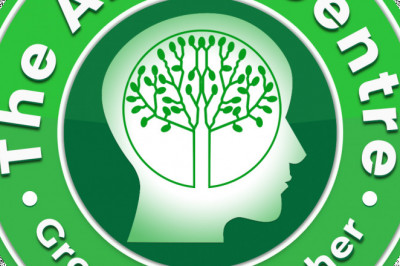views

Contemporary Benefits of Advanced Physiotherapy Techniques
The proper meaning of Physiotherapy can be defined as a profession of health care that involves the enhancing of the physician potential of a human being. It helps in improving the quality of life by physical approaches. And also help to establish, sustain, and recover physical, emotional, and economic well-being while taking into account individual differences in health status. Physiotherapists or physical therapists work with the body's different structures and obtain solutions for a wide range of physical problems. They often work as a team along with the other health professionals for the well-being of the people. Physiotherapy treatment can be divided into two, the first one is reflective behavior, and the other one is systematic clinical reasoning. Both approaches will contribute to patient care. Usually, the doctors prescribe physiotherapy, but nowadays, it is seen that people are referring to themselves for the treatment due to various health issues. And most people are not considering this as an emergency service.
Physiotherapy is a less changed technique but also opens up for various research. In the early days, physiotherapy was only considered and treated for the aged who had undergone surgeries. But from contemporary physiotherapy, a person from desk jobs to an athlete can use its benefits. Here are a few lists of techniques that many people are unaware of.
1. Blood Flow Restriction Therapy
Blood flow restriction therapy, also known as BFR Therapy, has been gaining traction to help patients heal faster and more efficiently in the worlds of physical therapy and fitness. While this strength-training method can benefit anyone trying to improve strength and muscular endurance, it is perfect for those who cannot bear significant weight loads, such as the elderly, persons with chronic ailments, and those recovering from injury or surgery. The principle behind BFR therapy is that it uses an elastic band and partially blocks the blood flow from a limb back to the heart. This blockage deprives the muscular tissues of oxygen and causes blood to pool, similar to what you might feel after a high-intensity workout, which serves to drive muscle growth. As a result, even if patients use smaller weights, they might still gain muscle. Under the presence of a professional physical therapist, BFR therapy is an incredibly successful and safe treatment because of its capacity to improve strength with lower weights.
2. Trigger Point Dry Needling
Dry needling may be a good choice if you suffer from persistent pain or frequent muscle tension. When overloaded or overused, muscles can develop knot-like areas called myofascial trigger points, which can cause pain, stiffness, and other problems. In dry needling, the therapist inserts a thin monofilament needle into the muscle's trigger point, causing the muscle to contract and relax, reducing pressure on the trigger point while activating the brain to release endorphins. In many cases, one dry needling session will make the patient feel better, while other patients will gradually relieve their muscle pain in a few sessions. It is essential to notice that dry needling differs from traditional herbal medicine-based acupuncture. Although it has become a standard approach for rapid muscle soreness among high-performance athletes, the increasing number of people suffering from daily muscle soreness is alleviated with Trigger Point Dry Needling.
3. Pelvic floor physiotherapy
Many pregnant and childbearing women suffer from urinary incontinence, incontinence, sexual dysfunction, and pelvic pain, but it is difficult to talk about these symptoms. There is a lack of information for the general public. People with these symptoms are often unaware that a trained physiotherapist may treat them. Please let us know your treatment options for what is available.
Create a treatment program. Physical therapy for pelvic floor problems is becoming an increasingly popular option for effective pelvic pain and other pelvic floor disorders. A qualified physiotherapist performs assessments to understand the cause of the problem and is customized to include training, pelvic floor weak muscle exercises, and procedural therapies to help you feel confident and painless.
4. Physical Therapy for Headaches and Jaw Pain
Most people have experienced headaches from time to time, and luckily most are short-lived. While most of them are regular headaches and can be treated by simply drinking water, eating, resting, or possibly taking over-the-counter pain medicine, they may need further treatment when headaches are severe and last for a minimum of a week. Physical therapy is a treatment for various types of headaches. A physical therapy program only for headaches consists of exercises, manual therapy, and stretches to relieve pressure. Headaches can also cause jaw pain, difficulty in chewing, neck pain and pain behind the eyes, known as Temporomandibular Joint Disorder (TMD) and can be treated by a physiotherapist.
A physical therapist can provide you with information regarding the proper posture of the jaw, head, neck, breastbone, and shoulder blades in various positions. To improve joint and muscle flexibility, they can also use manual therapy. A therapist can also teach you different exercises to strengthen the power of the jaw and restore more natural movement. The scar tissues sometimes repair and develop the function of joints and muscles.
5. Vestibular & Balance Therapy
Vestibular disorders, including dizziness, dizziness, and other balance and spatial disorders, can affect all areas of life and scare people of activities we take for granted, such as driving and doing household chores. Living with any pain is frustrating, but Physio Therapies help get you back to move confidently. I have. A physiotherapist can help identify the cause of a problem through various tests, including visual and vestibular evaluation and exercise and balance screening. The test assesses sensation, strength, range of motion of the limbs and spine, coordination, posture, balance, and gait to determine the root cause of dysfunction. Based on the discovery of the therapist, patients initiate a personalized exercise-based treatment program to relieve symptoms and address the underlying cause in the long run.
A physiotherapist can also provide information regarding the strategies to identify and reduce symptoms when performing daily actions like going for a walk or driving.












